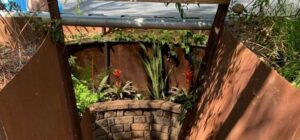Harnessing Microclimates: Keep Your Garden Thriving in the Summer Heat

Summer’s heat presents unique challenges for gardeners, but with the power of microclimates, you can create cooler, more favorable conditions for many of your favorite plants. Understanding and leveraging these naturally occurring or intentionally created microclimates can extend the growing season and help sensitive crops survive scorching temperatures.

What Are Microclimates?
A microclimate is a small area within your garden where conditions such as temperature, humidity, sunlight, and wind differ from the surrounding environment. These variances can create pockets of cooler air and provide protection from the extreme sun, offering a lifeline to plants that struggle in traditional full-sun conditions. Recognizing and utilizing microclimates is one of the best ways to keep your garden productive during the summer.
Kale and the Power of Shade
Take kale, for instance—a plant that traditionally grows in full sun. During the summer months, kale can suffer in high temperatures and intense sunlight. However, by planting kale in a cooler microclimate, you can still harvest sweet, delicious leaves. For kale to survive the summer, it needs about 65% shade. If you don’t already have natural shade in your garden, you can create it with shade cloth or by planting kale beneath a canopy tree. Trees that grow their leaves back in spring provide the perfect dappled light to shield kale from the harsh summer sun.
Heat-Loving Summer Crops
Not all plants shy away from the heat. There’s a traditional list of summer-loving crops that thrive in full sun and even benefit from higher temperatures. Consider planting the following heat-resistant vegetables:
- Eggplant
- Sunflowers
- Corn
- Amaranth
- Black-eyed peas
- Purple cow peas
- Sweet potatoes
- Jicama
- Melons
- Okra
Boost Your Soil with Beans
Summer is also an excellent time to grow beans. Beyond being a productive summer crop, beans naturally enrich the soil by fixing nitrogen, which is often depleted during the hot months. Incorporating beans into your garden rotation will benefit other plants as well, preparing the soil for a strong next season.
Creating Microclimates in Your Garden
In addition to utilizing natural shade from trees, there are several ways to build microclimates in your garden:
- Shade Structures: Use shade cloth, pergolas, or trellises to create shaded areas for delicate plants.
- Mulching: Apply organic mulch to retain soil moisture and regulate root temperatures.
- Strategic Planting: Use taller, heat-tolerant plants to shield more vulnerable crops from direct sunlight.
- Water Features: Incorporate small water features like fountains or misting systems to cool the air and increase humidity in specific zones.
Planning for Success
Understanding your garden’s microclimates and choosing the right plants for the season can transform summer gardening from challenging to rewarding. If you’re unsure where to begin or need guidance tailored to your unique space, start with a consultation. Visit Agriscaping.com to learn how to maximize your garden’s potential.


Read Our Latest Posts…
- 7 Garden Design Themes for Your Elegant Edible Landscape
 Expert tips for desert gardening, from plant zoning and efficient irrigation to soil care and agriscaping for a sustainable landscape.
Expert tips for desert gardening, from plant zoning and efficient irrigation to soil care and agriscaping for a sustainable landscape. - Subterranean Trampoline Gardens: A Hidden Oasis for Growing and Playing
 Expert tips for desert gardening, from plant zoning and efficient irrigation to soil care and agriscaping for a sustainable landscape.
Expert tips for desert gardening, from plant zoning and efficient irrigation to soil care and agriscaping for a sustainable landscape. - 7 Elegant Edible Flowers To Be Thankful For
 Expert tips for desert gardening, from plant zoning and efficient irrigation to soil care and agriscaping for a sustainable landscape.
Expert tips for desert gardening, from plant zoning and efficient irrigation to soil care and agriscaping for a sustainable landscape. - Top 10 Winter Wonders: Beautiful and Edible Flowers for the Cool Season
 Expert tips for desert gardening, from plant zoning and efficient irrigation to soil care and agriscaping for a sustainable landscape.
Expert tips for desert gardening, from plant zoning and efficient irrigation to soil care and agriscaping for a sustainable landscape. - Create Your Own “Farmacy” with Healing and Aromatic Herbs
 Expert tips for desert gardening, from plant zoning and efficient irrigation to soil care and agriscaping for a sustainable landscape.
Expert tips for desert gardening, from plant zoning and efficient irrigation to soil care and agriscaping for a sustainable landscape.
